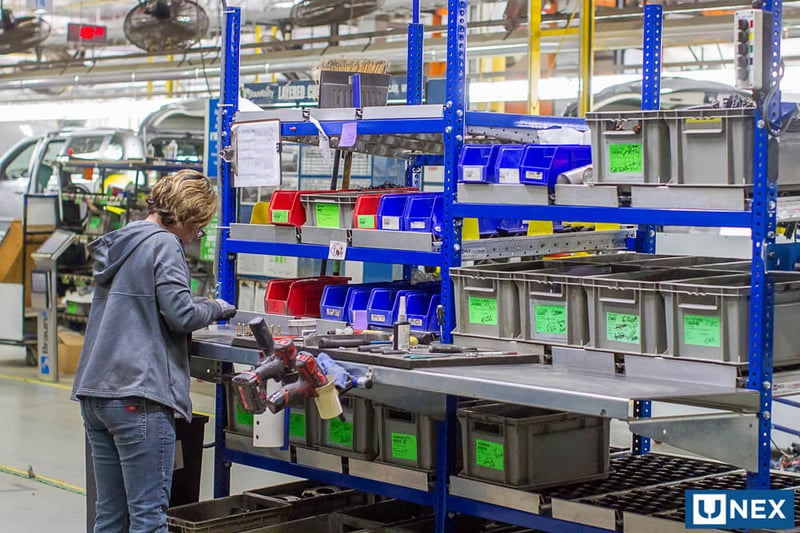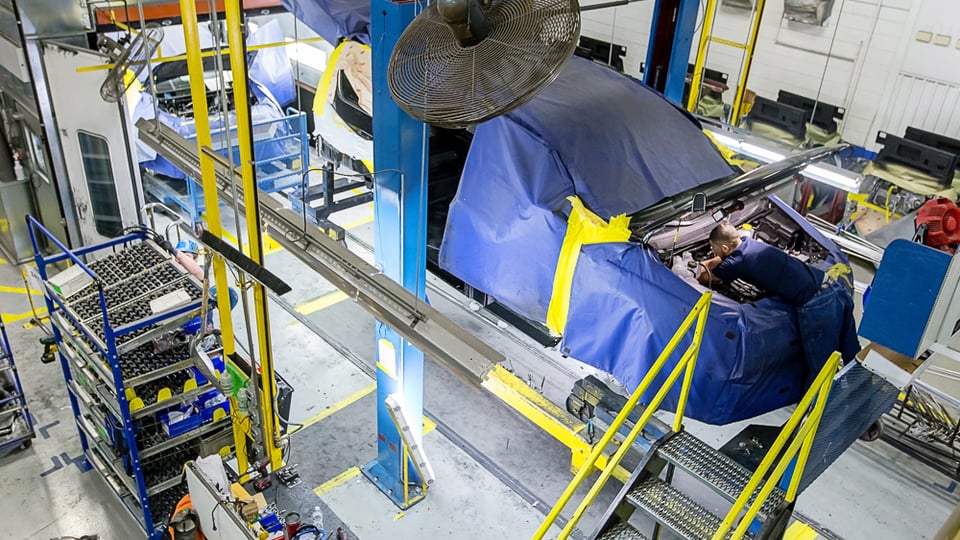What is Kaizen? - Lean Manufacturing

Kaizen is a Japanese business philosophy that focuses on continuous improvement. This philosophy was first implemented by Toyota in the 1940s. In Kaizen, everybody in a business is required to perform activities that will improve the functionality of a company, whether it be assembly line workers or the president of the business. Employees are all encouraged to recommend solutions to problems that might slow down the production process, and then try to present a solution - It calls for employees to use their brains along with their hands. The overall idea of Kaizen is to continuously improve the current work method by analyzing everyday processes, and then fixing them. Focusing on these problems can have a large positive impact, reducing work in progress and saving considerable amounts of time.
Related Reading: The Kaizen Mindset- Implementing Continuous Improvement with UNEX
How Does it Apply to Lean Manufacturing?
While Kaizen is aimed towards continuous improvement, lean manufacturing is focused on reducing waste and increasing efficiency. By implementing Kaizen, employees will refine the work process bit by bit and become closer to achieving lean production.
Implementing Kaizen
Small Improvements
Kaizen is completely built around small improvements. Stress this to employees, let them know that no change is too small. Every little adjustment helps, and it adds up fast. Don’t let the big problems become the only focus. Workers often become so accustomed to their process and ignore minute details. For example, if an employee is reaching even a little bit too far to grab their tools, this could be solved. The tool could be moved closer to the employee, or the employee could be moved closer to the tool. Employees should constantly be evaluating their tasks and trying to see how they can adjust them.
Teamwork
One of the most important steps in implementing Kaizen is teamwork. Employees must have respect for one another and listen to what others have to say, regardless of rank. By listening to the suggestions of people from different areas of a company, all issues will be addressed. After all, a problem is best solved by somebody who deals with it on a daily basis and understands what it entails. Be sure to hold meetings with employees on a regular basis. Listen to their problems, and prompt them to offer up a solution to that specific problem. This is an extremely effective method, not to mention empowering employees!
Morale
Employees have to be happy. They must come to their job with a willingness to perform and feel enthusiastic about what they are doing. If this is not the case, employees will not feel inclined to solve problems. Employers can counter this issue by offering up some fun events in the workplace. Having a little bit of fun at work can boost productivity. Remember, happy employees, are productive employees.
Motivation-Kaizen
Although employees must be happy, they must also be driven. Workers have to understand the goals they must achieve, see the reason for doing them, and aim to achieve those goals. Motivating employees can often be done through a reward system and paired with Kaizen - for example, if an employee comes up with logistics solutions, they may receive a bonus. This leads the workers to actually want to participate in the Kaizen philosophy.
Consistency
Consistency is key. If Kaizen is not followed up on a regular basis by every employee, it will be unsuccessful. Just like the engine in a car, the failure of one component can cause harm to the entire system. "For changes to be of any true value, they’ve got to be lasting and consistent." - Tony Robbins
Inform
Once everything is understood by management, the employees should all be taught. They must understand the inner workings of the system, and how they can use it to improve production. Have management or someone who is educated in these methods run a workshop to inform employees about Kaizen.
Related Reading: What is Kaizen? - Lean Manufacturing
By making small changes over time, an unimaginable amount of time and money can be saved. By increasing productivity by 1% a day for one year, employers can see a 38 times increase in productivity. When first beginning it might not seem like much, but as time goes on, minor improvement results in a massive gain.



